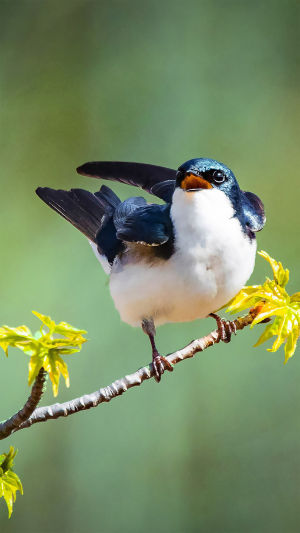With the change of seasons, millions of animals on earth join the migratory procession every year.
On land, there are animal migrations like zebras, hornbills, and elephants; in water, there are aquatic migrations like whales, great white sharks, mackerel, and grass carp; and in the air, there are migrations of birds of prey like geese, swallows, and tandoori cranes.
Among them, the migration of birds has been a constant concern for humans because of its large number, rich variety, long distance, precise timing, and accurate navigation.
Not all birds migrate in great numbers. Birds such as sparrows, paintbrushes, crows, and woodpeckers will reside in their breeding areas year-round and do not migrate with the seasons; this group of birds is called resident birds.
Due to climate, food conditions, habitat, etc., the same bird species, in different regions or even in the same area shows different types of residence.
For example, the cranes in Hokkaido, Japan were originally summer migratory birds, but due to the stable food source given by artificial feeding in winter, some of them have given up migrating and become resident birds.
Why do birds migrate? The reasons why birds migrate are complex but are generally believed to be due to their instincts.
The instincts of birds to migrate are closely related to their genetic and physiological aspects and are also the result of long-term evolutionary adaptation to the external environmental conditions in which they live.
Birds can obtain sufficient food in temperate regions during the summer and have difficulty surviving in winter due to a lack of food.
In temperate regions, the long days and short nights in summer give birds plenty of time to feed and raise their chicks, and the number of insects in temperate regions in summer is high, and there are fewer natural enemies compared to tropical regions.
After autumn, most trees drop their leaves and grasses wither, and the number of insects declines sharply as they lie dormant or die after laying eggs.
Small insect-feeding birds find it difficult to survive in food-poor environments and migrate to the south where food is plentiful to overwinter safely, while medium and large birds that hunt small insect-feeding birds move south with them.
At low latitudes, summer breeding faces a high number of natural predators, and competition for nesting sites and food resources is more intense, so the following spring geese and swallows will also return to the north.





